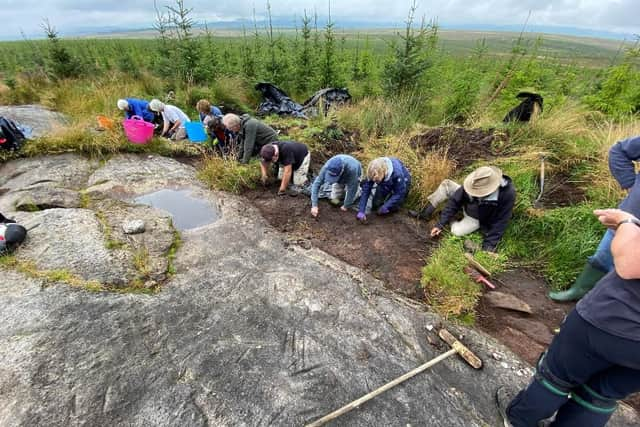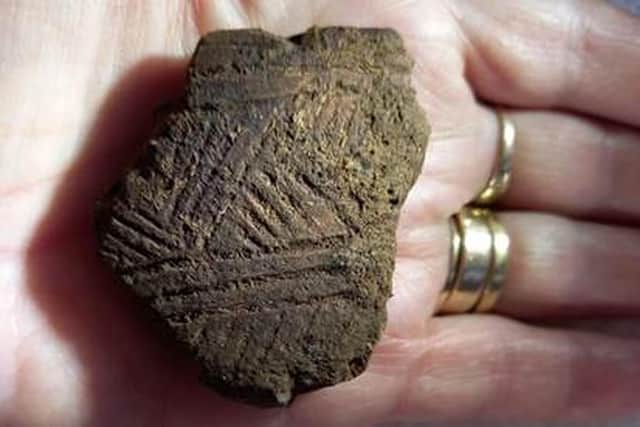Scotland's best archaeological finds of 2022 revealed
Dig It!, which promotes and supports archaeology on behalf of the Society of Antiquaries of Scotland, said the finds increased understanding of the “richness and challenges of past people’s lives”, while illuminating topics that are still relevant today.
The most significant find was named as Scotland’s biggest concentration of Neolithic axe grind points near Balfron, Stirlingshire, with it possible that people travelled miles to smooth or sharpen their axes at these “special locations” more than 4,500 years ago.
Advertisement
Hide AdAdvertisement
Hide AdMore than 30 U-shaped groves were uncovered on rocks of abrasive sandstone, with it suggested the tools were then used to chop trees or perhaps serve a ceremonial function. Dr Murray Cook, archaeologist with Stirling Council, said it had been the “discovery of a lifetime”.
He said: “Discovery is at the heart of archaeology. The hope is that the next spade turns up something amazing, but most of the time it's just the routine and the truncated, fragments of a jigsaw without the picture.
"But Balfron was different. The discovery of a lifetime, these grooves are astonishing. We had never seen anything like them before and I'm not sure anyone in Britain had at this scale. To think that people kneeled here and sharpened the stone axes that would clear Scotland's primordial forests is just mind blowing.”
In Shetland, a rare sherd of 4,000-year-old pottery was discovered on Burra. It was found during a survey of a half-submerged prehistoric house at Whalsie’s Ayre to help record the effects of climate change, led by Steve Jennings, chair of Archaeology Shetland and Ellie Graham, PhD student at Aberdeen University.
The sherd belongs to the Beaker tradition, a pottery style introduced to Britain from the continent around 2500BC. Further analysis should help develop Shetland’s story of this period and its people.


Ms Graham said it was an “incredibly exciting” moment when Mr Jennings found the pottery. She said: “It's such a large and beautifully decorated piece in its own right, and it was in such a vulnerable position jutting out of the crumbling coast edge, so we were very lucky to recover it just in time before it was washed away.”
On the island of Lismore in Argyll, Dr Clare Ellis, of Argyll Archaeology, uncovered evidence that points to a “nationally important” monastery site.
Medieval artefacts such as crucibles, moulds and glass found at the site at Clachan, which were on par with those produced at Iona, indicate specialist craftspeople were producing high-status objects for a prosperous monastic community.
Advertisement
Hide AdAdvertisement
Hide AdThe discoveries add weight to the suggestion Clachan was home to the thriving monastery of St Moluag who is said to have travelled from Ireland to Lismore in the sixth century before founding a monastery around the same time that St Columba landed on Iona.


Other leading finds include part of a vitrified fort, which likely dates to between 800BC and 1000AD, at the hilltop site where 15th-century Tinnis Castle near Drumelzier in the Scottish Borders once stood. The village had connections to a local Merlin legend for more than 600 years.
Comments
Want to join the conversation? Please or to comment on this article.